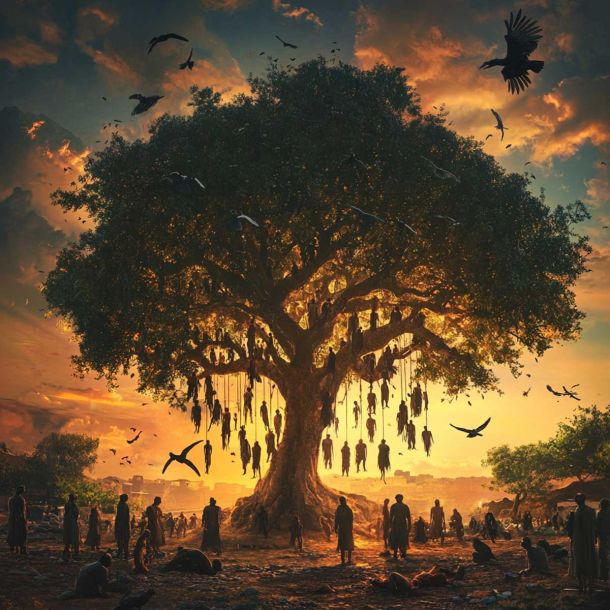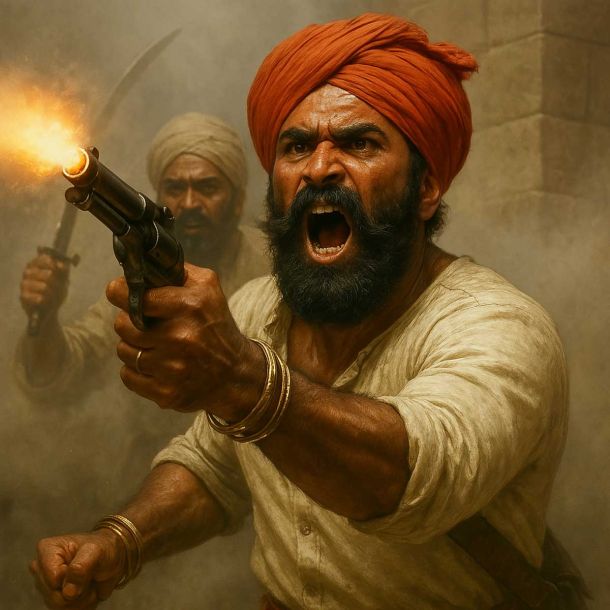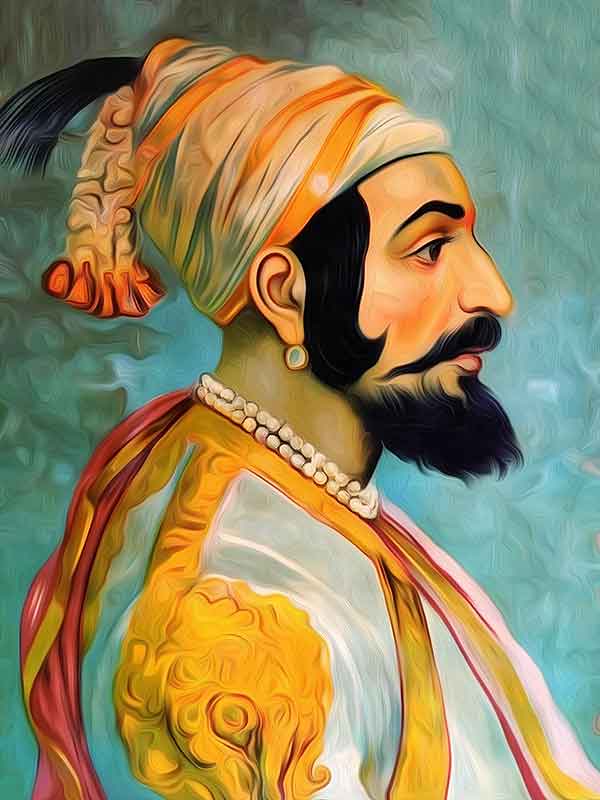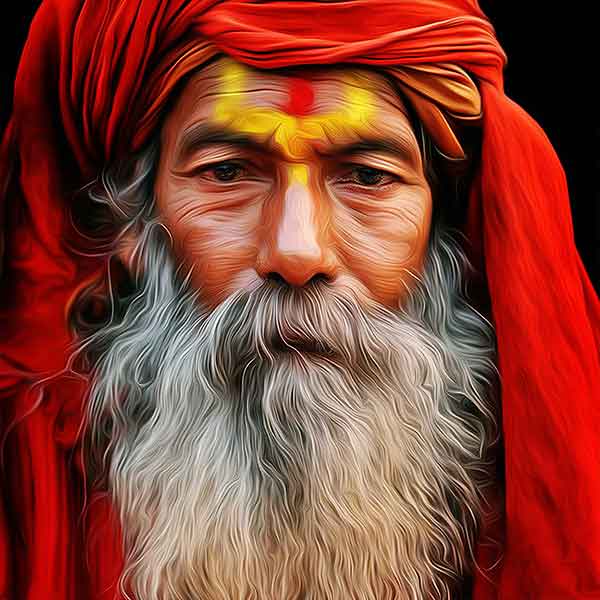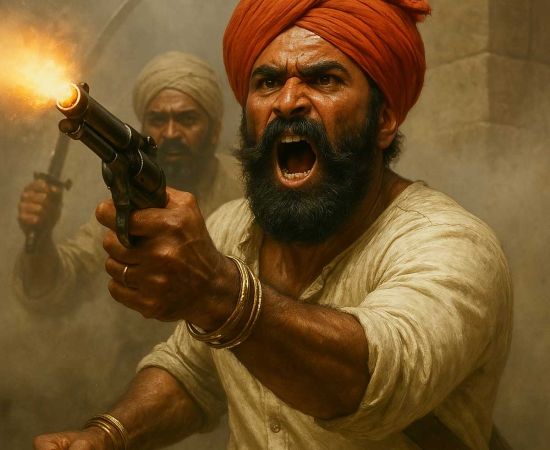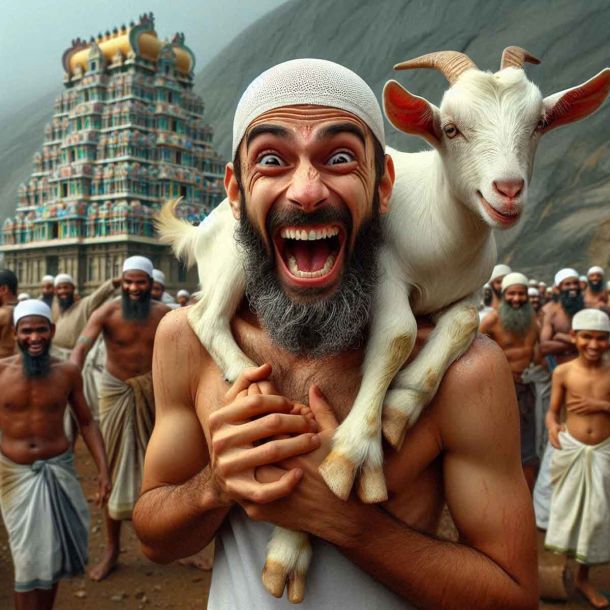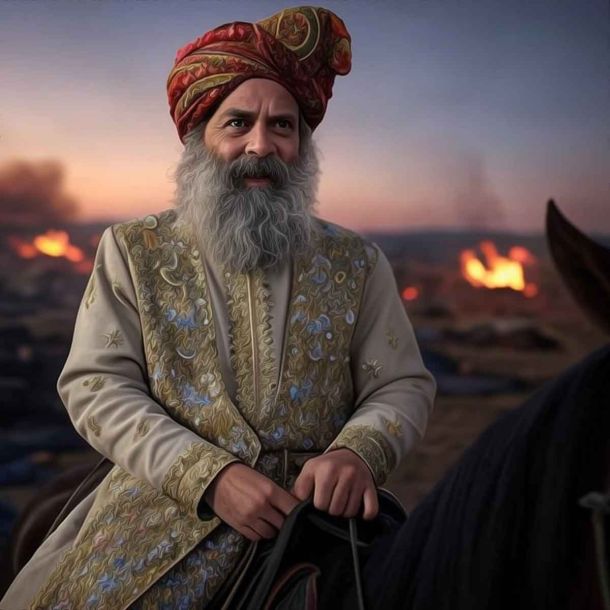MORE COVERAGE
Twitter Coverage
Satyaagrah
Written on
Satyaagrah
Written on
Satyaagrah
Written on
Satyaagrah
Written on
Satyaagrah
Written on
JOIN SATYAAGRAH SOCIAL MEDIA
"हक़ीक़त": Remembering Haqiqat Rai, the 13-year-old Hindu boy, the first victim of blasphemy laws, tortured and stoned to death on Basant Panchami in 1734 under Mughal rule for resisting insults to Hindu gods, refusing to convert, and choosing martyrdom

India has, time and again, witnessed the violent repercussions of so-called blasphemy accusations, particularly when it comes to criticisms of Islamic figures. One of the most alarming incidents in recent times unfolded in 2022, when Nupur Sharma, the then spokesperson of the Bharatiya Janata Party (BJP), found herself at the center of a storm. Her remarks about Prophet Muhammad and his wife Ayesha—made during a TV debate—sparked unprecedented rage among Islamists. What often goes unmentioned in the mainstream narrative is that her statement was a direct response to Islamist Taslim Ahmed Rahmani, who had been mocking the Shivling discovered at the Gyanvapi complex in Varanasi. The selective outrage that followed, however, did not address this provocation but focused solely on Sharma’s response.
|
What ensued after her remarks was nothing short of a bloodthirsty frenzy. Beheading calls, death threats, and rape threats flooded in from radical elements, making it a horrifying routine for weeks across the country. Cities saw the eruption of violence and arson, as mobs took to the streets to express their anger. This wasn't just limited to verbal threats—several innocent individuals lost their lives simply for expressing support for Nupur Sharma on social media. The level of aggression demonstrated was a clear indicator of an orchestrated campaign of fear and intimidation.
As Basant Panchami of 2023 arrived, a chilling parallel emerged from history, a stark reminder of how such violent enforcement of blasphemy laws has been a longstanding reality. The first recorded Hindu victim of blasphemy laws, according to Sharia rule, was Haqiqat Rai, a name that, sadly, many have either forgotten or never heard of.
The case of Haqiqat Rai, a 12-year-old boy from 18th-century India, bears striking similarities to Nupur Sharma’s ordeal. Much like how Sharma reacted to provocation, Haqiqat Rai too was forced into a situation where he had to defend his faith. In the year 1734, in the city of Sialkot, a young Haqiqat found himself provoked by his fellow Muslim classmates, who engaged in blasphemous mockery of Hindu deities. When the boy retaliated with words, standing his ground for his faith, he was subjected to brutal punishment—stoned to death in cold blood.
This tragic incident, buried in the pages of history, serves as a reminder that such extremist actions are not new; rather, they have been methodically perpetuated for centuries. The narrative remains unchanged—Hindus, when standing up to defend their gods and goddesses from ridicule, are met with severe consequences. Haqiqat Rai’s fate exemplifies how blasphemy laws were weaponized against Hindus centuries ago, much like how they are being used today.
Haqiqat Rai was born in the year 1719 into a Hindu Khatri family in Sialkot, which is now a part of Pakistan. The Hindu Khatris had played a crucial role in assisting Guru Nanak Sahib during the formation of Sikhism, standing as strong pillars of support. They upheld a noble tradition where they dedicated their firstborn to the panth, a practice that was not just a religious gesture but a strategic necessity. This was an era of violent Islamic invasions, where Hindus faced the constant threat of forced conversions and brutal oppression. To safeguard their faith and culture, they willingly made sacrifices, giving their eldest sons to defend Sanatan Dharma.
From a young age, Haqiqat Rai exhibited an unwavering devotion to his religion. Unlike other children, he was deeply immersed in the values and traditions of Sanatan Dharma, understanding its essence and taking immense pride in his heritage. His spiritual and intellectual upbringing was shaped under the guidance of his revered teacher, Guru Har Rai Acharya Ji. In those times, under Mughal rule, Persian was made mandatory for any administrative work or official communication. Learning Persian was not just a requirement but a compulsion, imposed to ensure the dominance of the ruling class. At the tender age of 12, Haqiqat Rai was sent to a Maulana to acquire this knowledge.
However, his time at the madrasa was far from a peaceful learning experience. The Muslim boys studying there ridiculed him relentlessly, branding him a "Kafir" and mocking his faith. Day after day, they taunted him, deriding Hindu customs and traditions. The verbal abuse often escalated into physical confrontations, leaving Haqiqat Rai injured multiple times. Despite these repeated altercations, he maintained his composure. He brought up his concerns with the Maulana, hoping for justice. But the Maulana turned a blind eye, refusing to acknowledge the bullying. Haqiqat Rai, despite being young, continued to endure the humiliation with patience and dignity.
But one day, his tolerance was pushed to the limit. After the completion of Friday prayers, his Muslim classmates began openly mocking Hindu gods and goddesses. Their taunts were no longer just subtle jabs; they directly insulted Goddess Durga and Shri Ram. The persistent provocation and blasphemy against Hindu deities enraged Haqiqat Rai, who had so far restrained himself from reacting. But on this day, he could no longer remain silent.
In response to their continuous mockery, he retaliated by quoting facts about Bibi Fatima. Haqiqat Rai had always been an inquisitive observer, and he had previously questioned Muslim clerics about aspects of their own religion. This time, his words struck a nerve. The Muslim boys, unable to tolerate any form of rebuttal, brutally attacked him. They thrashed him mercilessly, leaving him with a swollen and bloodied face. Somehow, he managed to escape and returned home, battered but unbroken.
On the other side, the Muslim boys had already rushed to the Maulana and exaggerated the entire situation. They framed Haqiqat Rai as the aggressor, claiming that he had insulted Bibi Fatima, a grave offense under Sharia law. The Maulana, instead of investigating the truth, immediately took their word for it. Furious, he summoned Haqiqat Rai.
|
As soon as the young boy arrived, he was seized by the Maulana and subjected to a severe beating. His cries for mercy fell on deaf ears. The Muslim clerics decided that Haqiqat Rai would be brought before Amir Beg, the administrator of Sialkot, to be tried under Sharia law. The charges against him were severe. Qazi Abdul Haq, an influential figure, accused him of hurting the religious sentiments of Muslims by "insulting Fatima." According to the Qazi, this crime warranted nothing less than a brutal and painful execution.
The verdict was as horrifying as it was unjust. Qazi Abdul Haq declared that the most fitting punishment for Haqiqat Rai was to have boiling hot oil poured over him. At this time, he was merely 13 years old. His parents, Lala Bhagmal Rai and his wife, were devastated. They could not bear the thought of their only child meeting such a gruesome fate. Desperate to save their son, his father offered to pay compensation in exchange for leniency.
At first, the Muslim clerics appeared willing to negotiate. They advised the administrator to accept Lala Bhagmal Rai’s proposal of donating his lands to them. But this was merely a deception. While Haqiqat Rai’s parents waited with hope, expecting their child to be spared, the butchers had already decided his fate. Their hunger for blood was far from satisfied. They had no intention of showing mercy.
The wheels of injustice were already in motion, and Haqiqat Rai was about to face the consequences of standing up for his faith. What followed next was one of the most tragic episodes in history—a stark reminder of how Hindu voices were silenced under the oppressive rule of religious extremism.
It was the sacred occasion of Basant Panchami, a festival that signifies knowledge, wisdom, and devotion. But on this day, injustice and religious intolerance overshadowed the divine celebrations. The powerful Islamic clergy, driven by their zeal to impose their beliefs, sought to make an example out of Haqiqat Rai, a mere 13-year-old boy who had shown immense courage in standing by his faith.
Qazi Abdul Haq delivered an ultimatum: the young boy had a choice—he could escape the gruesome punishment awaiting him if he embraced Islam. This was the last opportunity offered to him, the final push to break his will. But Haqiqat Rai, despite his tender age, stood tall in his resolve. Without hesitation, without a moment of doubt, he firmly refused to abandon his faith. He would not surrender to the forceful imposition of Islam.
His refusal enraged the authorities even more. Amir Beg, the administrator, now ordered an even more brutal punishment. Haqiqat Rai was to be hanged upside down from a tree and beaten mercilessly until he agreed to convert. The young boy, instead of succumbing to the unbearable pain, held onto his conviction with even greater determination. With blood dripping from his wounds, he defiantly proclaimed, “I am very fortunate to be born in Sanatan Dharma and only fortunate beings get a golden chance to stay alive and die for their Dharma.”
Seeing his unwavering devotion, Amir Beg decided to send Haqiqat Rai to Lahore, where he would be tried before the governor, Zakria Khan. This decision crushed the heart of his mother, Goran. As she watched her son being taken away, her grief was immeasurable, but her resolve was even stronger. She knew that this was the ultimate test, not just for her son, but for their entire lineage.
With a heavy heart, she turned to her brave son and spoke words that would echo through history: “I will lose my son after your death, but even more upsetting will be that I would be called the mother of a deserter, who left his faith to save his life.” She made it clear that she would rather bear the pain of his sacrifice than live with the shame of him abandoning his faith. Her words were not just those of a grieving mother; they were of a mother who understood the price of Dharma and the eternal glory that comes with upholding it. She chose honor over life.
|
The Final Trial: Execution by Stoning
Haqiqat Rai was now in the hands of Zakria Khan, the Governor of Lahore. Despite the repeated tortures inflicted upon him, despite the relentless pressure to convert, he did not waver for a single moment. The tormentors had exhausted all means to break his spirit, but he remained unshaken.
Realizing that no amount of torture would compel him to renounce his faith, Zakria Khan pronounced the final verdict. Under Sharia law, Haqiqat Rai was sentenced to be stoned to death. This was to be his final trial—the ultimate punishment for a child whose only crime was defending his religion against mockery.
With a crowd gathered to witness the execution, the stones began to rain down on the young boy. Each blow was meant to weaken him, to instill fear, to make an example out of him. But Haqiqat Rai did not flinch. He did not cry for mercy. Instead, he embraced death with open arms, standing firm in his devotion to Sanatan Dharma.
At just 13 years old, Haqiqat Rai achieved martyrdom, proving that faith is not bound by age but by conviction. He chose death over conversion, upholding the honor of his religion with his last breath. His story remains one of the earliest recorded cases of Hindu resistance against religious persecution under Islamic rule.
|
The Historical Context of Islamic Expansion
Haqiqat Rai’s fate was not an isolated incident but a reflection of a larger historical pattern. Ever since the founding of Islam, the Arab Muslims expanded their religion through military conquests, subjugating lands in rapid succession. These invasions were not just about territorial dominance—they carried a much deeper purpose. The ultimate goal was the transformation of Dar-ul-Harb (land of non-believers) into Dar-ul-Islam (land of Islam).
While not all conquered populations converted to Islam immediately, the pressure to do so intensified over time. By the end of the eleventh century, Muslims formed the majority in the lands they had conquered, enforcing their religious doctrines through law and force. Their strategy was straightforward—convert, face death, or pay Jaziya, a heavy tax imposed on non-Muslims. Those who refused to convert had their temples and places of worship destroyed, their cultural heritage erased, and their way of life obliterated.
Even in modern times, the remnants of these historical patterns remain visible. The countries where Muslims form the majority today are often governed by Islamic law, lacking democratic structures and religious tolerance. Meanwhile, in nations where they are a minority, they frequently challenge the existing laws, often in an attempt to impose their own religious ideals. This pattern is evident in France, India, and several other nations, where debates around secularism and religious impositions continue.
The core ideology of Islam does not permit open discussions, does not encourage syncretic practices, and does not tolerate opposing views. Haqiqat Rai’s story is just one of many examples of Hindus who had to suffer at the hands of an intolerant system that sought to erase their identity. His sacrifice is a reminder that religious persecution is not a relic of the past but an ongoing struggle.
Haqiqat Rai to Nupur Sharma: The Unbroken Cycle of Blasphemy Accusations Against Hindus
History has a way of repeating itself. What happened centuries ago to Haqiqat Rai, a young boy who was stoned to death for resisting blasphemy against Hindu gods, found a modern reflection in the case of Nupur Sharma, a spokesperson of a national political party. In both instances, a Hindu was provoked, retaliated with facts, and then accused of blasphemy, facing death threats and societal condemnation.
A parallel can be drawn between the brutal persecution of Haqiqat Rai in the 18th century and the orchestrated outrage against Nupur Sharma in 2022. During a debate on national television, Nupur Sharma was confronted by a fellow delegate who made derogatory remarks about Hindu gods. In response to this provocation, she cited a well-documented Hadith about Prophet Muhammad. Her exact words were:
“The Prophet married Aisha when she was six years old and he consummated his marriage when she was nine years old.” – The revered Sahih al-Bukhari, 5134; Book 67, Hadith 70.
Her statement was not an opinion or a fabrication; it was a direct reference from an Islamic scripture. Yet, this factual quote was immediately labeled as blasphemy, triggering massive outrage from Islamic nations and radical elements within India.
This hypocrisy was glaring—insulting Hindu gods and goddesses had long been normalized under the pretext of "freedom of expression" or "creative liberty." Artists, writers, and individuals from other faiths have openly mocked Hinduism for years, with no consequences. One such example is Maqbool Fida Husain, a painter who depicted Hindu goddesses in obscene and nude forms. His so-called artistic freedom was celebrated, and instead of being condemned, he was granted citizenship by Qatar—an Islamic monarchy that later objected to Nupur Sharma’s statement, which was simply a factual citation from their own religious texts.
Despite the backlash, Nupur Sharma was forced to apologize publicly and was sacked from her party. But even her public apology did not silence the death threats. The outrage continued, intensifying into a violent campaign against her life.
|
A Medieval Mindset in a Modern World
Even after her forced apology, a relentless campaign of threats and legal harassment was unleashed upon Nupur Sharma. Multiple FIRs were lodged against her across India, in cities like Kolkata, Hyderabad, and Kashmir. The legal system was weaponized to corner her, while radicals issued open calls for her beheading.
The threats were not just empty words. A bounty was placed on her life, with radical elements openly inciting violence against her. The Khadim of Ajmer Dargah went as far as to publicly declare that anyone who beheaded Nupur Sharma would be handsomely rewarded. This was not the call of a fringe extremist but a chilling echo of the same medieval Talibani mindset that has persisted within certain sections of Islam for centuries.
These violent calls were not spontaneous—they were systematic. This was not just about one woman’s statement; it was a reflection of a larger civilizational conflict. A battle where Islamists seek to suppress any Hindu voice that dares to speak against their hegemony. This fanaticism, rooted in centuries-old dogma, aims to instill fear and silence dissent.
The Larger Agenda: Ghazwa-e-Hind
This pattern of suppression, intimidation, and violence is not new. It is deeply entrenched in the ideology of Ghazwa-e-Hind—the Islamic prophecy that calls for the conquest of India and the complete Islamization of the land.
For centuries, Islamic invasions were driven by the mission to destroy Bharat’s culture, its Vedic knowledge system, and its people, whom they derogatorily referred to as "Kafirs." From the destruction of temples to the forced conversions of millions, the aim was clear—to eradicate the indigenous identity of Bharat and replace it with an Islamic dominion.
This civilizational war did not end with the fall of the Mughal Empire or the exit of colonial rulers. It continues today in different forms—be it through legal jihad, demographic shifts, organized riots, blasphemy accusations, or the suppression of Hindu voices. The aggression against Nupur Sharma was not just about her words; it was a clear message—anyone who speaks up against Islamic supremacy will be hunted down.
Conclusion: The Cycle Continues
The story of Haqiqat Rai and Nupur Sharma is not just about individuals—it is about a deep-rooted ideological conflict that has been ongoing for centuries. In both cases, a Hindu was provoked, and when they responded with facts, they were labeled as blasphemers and marked for death.
History has shown us that radical Islamic forces do not tolerate opposition. They cannot accept any challenge to their dominance, be it in the 18th century or the 21st. Their strategy remains the same—intimidation, violence, and forceful submission.
As we witness this civilizational struggle unfold, the question remains: Will Bharat learn from its history, or will it continue to pay the price for its silence?
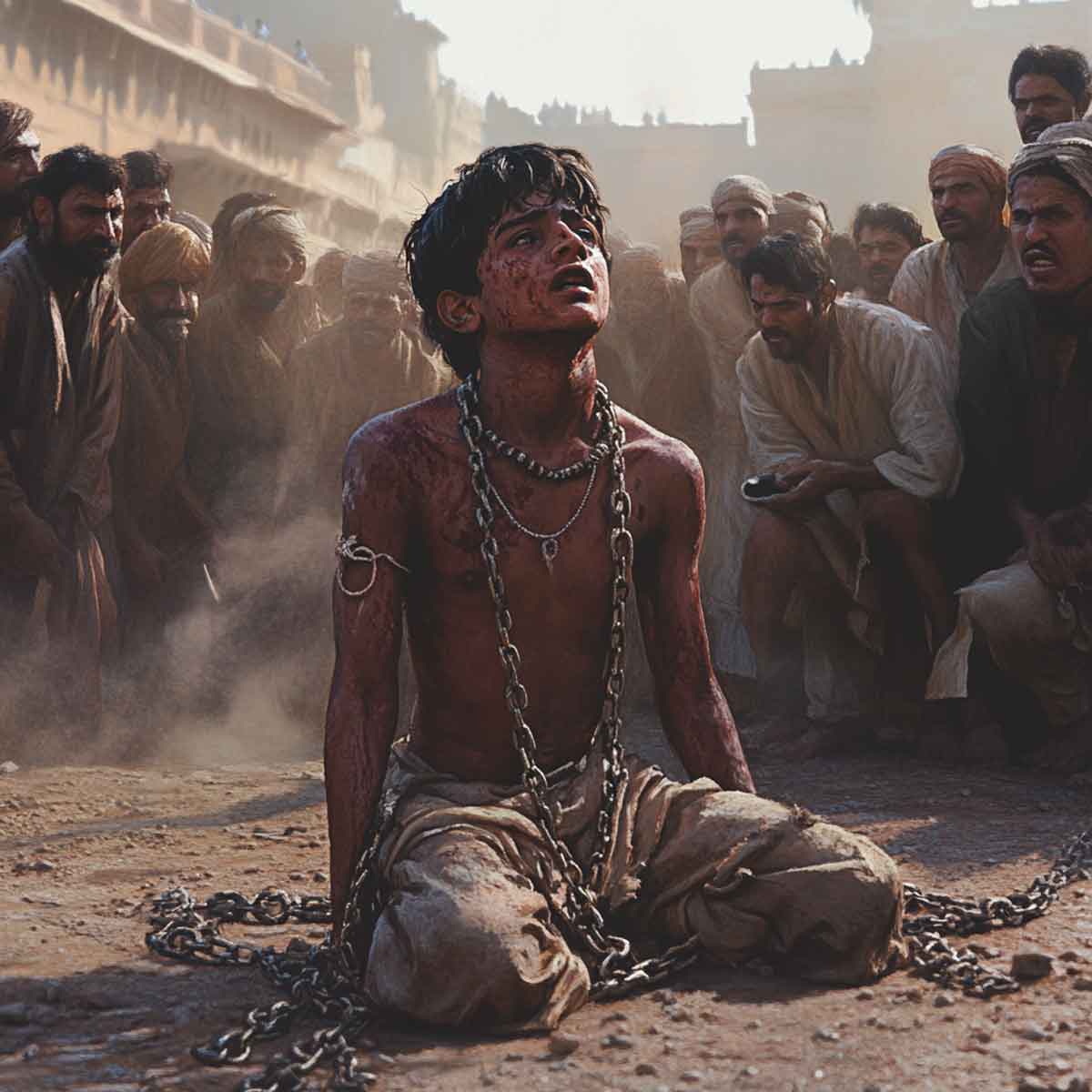 |
 Support Us
Support Us
Satyagraha was born from the heart of our land, with an undying aim to unveil the true essence of Bharat. It seeks to illuminate the hidden tales of our valiant freedom fighters and the rich chronicles that haven't yet sung their complete melody in the mainstream.
While platforms like NDTV and 'The Wire' effortlessly garner funds under the banner of safeguarding democracy, we at Satyagraha walk a different path. Our strength and resonance come from you. In this journey to weave a stronger Bharat, every little contribution amplifies our voice. Let's come together, contribute as you can, and champion the true spirit of our nation.
 |  |  |
| ICICI Bank of Satyaagrah | Razorpay Bank of Satyaagrah | PayPal Bank of Satyaagrah - For International Payments |
If all above doesn't work, then try the LINK below:
Please share the article on other platforms
DISCLAIMER: The author is solely responsible for the views expressed in this article. The author carries the responsibility for citing and/or licensing of images utilized within the text. The website also frequently uses non-commercial images for representational purposes only in line with the article. We are not responsible for the authenticity of such images. If some images have a copyright issue, we request the person/entity to contact us at This email address is being protected from spambots. You need JavaScript enabled to view it. and we will take the necessary actions to resolve the issue.
Related Articles
- Haunting history- 50 years of Operation Searchlight in Dhaka
- Let’s remember Karsevaks this Diwali, who laid down their lives for Ram Temple: Ayodhya massacre of Hindu devotees, 2 Nov 1990
- Jauhar of Rani Padmini and the enduring Muslims legacy of enacting necrophilia act of gang raping dead bodies
- The Islamic Doctrine of Permanent War: Jihãd and Religious Riot
- "Razakar Era: When Innocence was Lost Forever": Unveiling a dark tale of Hyderabad history, the upcoming film "Razakar" sheds light on the hardships endured by Hindus under the Nizam rule before the heroic intervention of Indian forces in Operation Polo
- Hero of Pawankhind: Veer Maratha Bajiprabhu Deshpande, who led 300 Soldiers against 12000 Adilshahi Army defending Shivaji
- Godse's speech and analysis of fanaticism of Gandhi: Hindus should never be angry against Muslims
- The Residue of Islamism - Hindu Society Under Siege
- Operation Polo: When India annexed Hyderabad from the Nizam and Razakars, the suppression of Hindus and the role of Nehru
- "जय भवानी": Chhaava crosses ₹200 crore, tearing through the distortion of history, unveiling Aurangzeb’s brutality, triggering a tear-jerking meltdown of the Islamo-leftist cabal, and marking a civilizational awakening as Bharat reclaims its truth
- The Situation at Present - Defence of Hindu Society
- If only India’s partition chilling wound was not enough, Gandhi did his last protest again only to blackmail India into giving 55 crores to Pakistan, dragged Hindu, Sikh refugees seeking shelter in mosques to die in cold: And we call him Mahatma, not for
- Moplah Genocide of the Malabar Hindus, 1921: Thousands of Hindus slaughtered
- Dangers of losing our identity: Guru Tegh Bahadur forgotten and Aurangzeb being glorified
- Tipu Sultan remembered as killer of Brahmins and demolisher of temples in many villages of Tamil Nadu: a freedom fighter or Islamic bigot?

